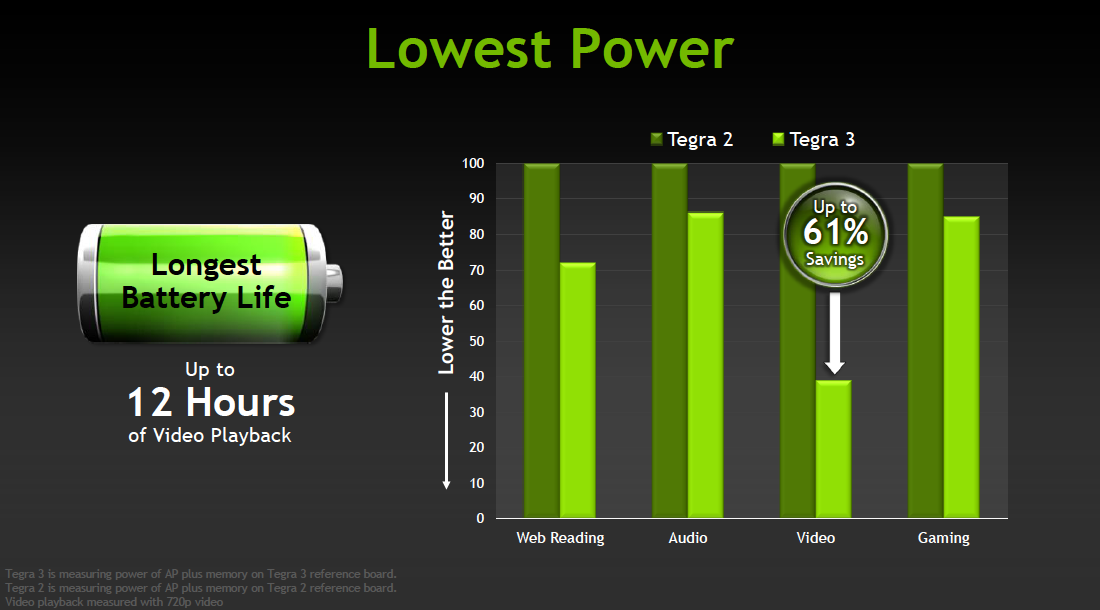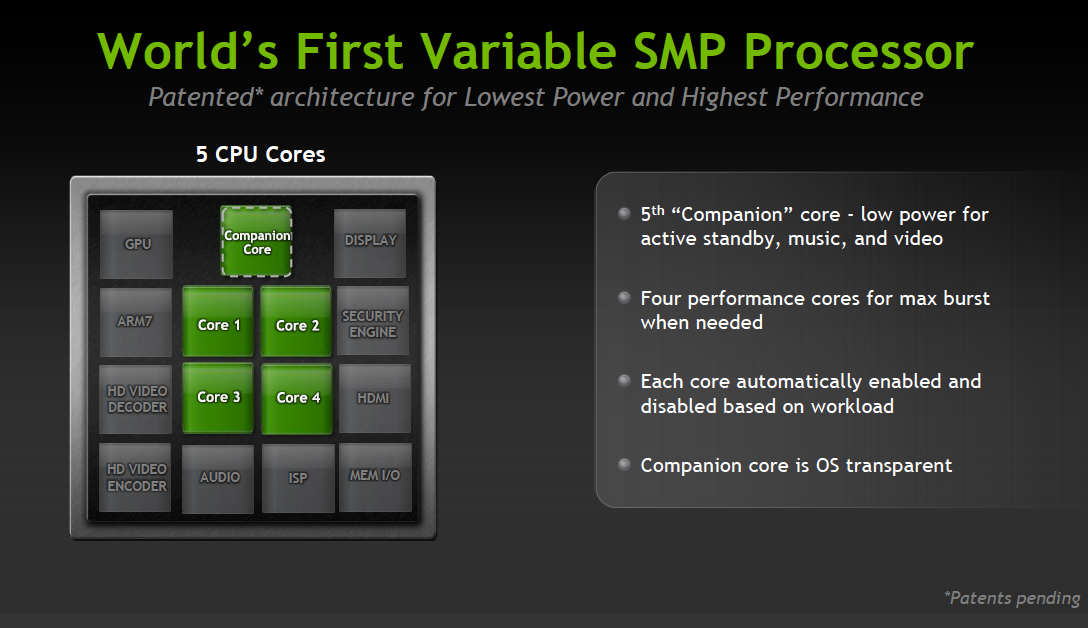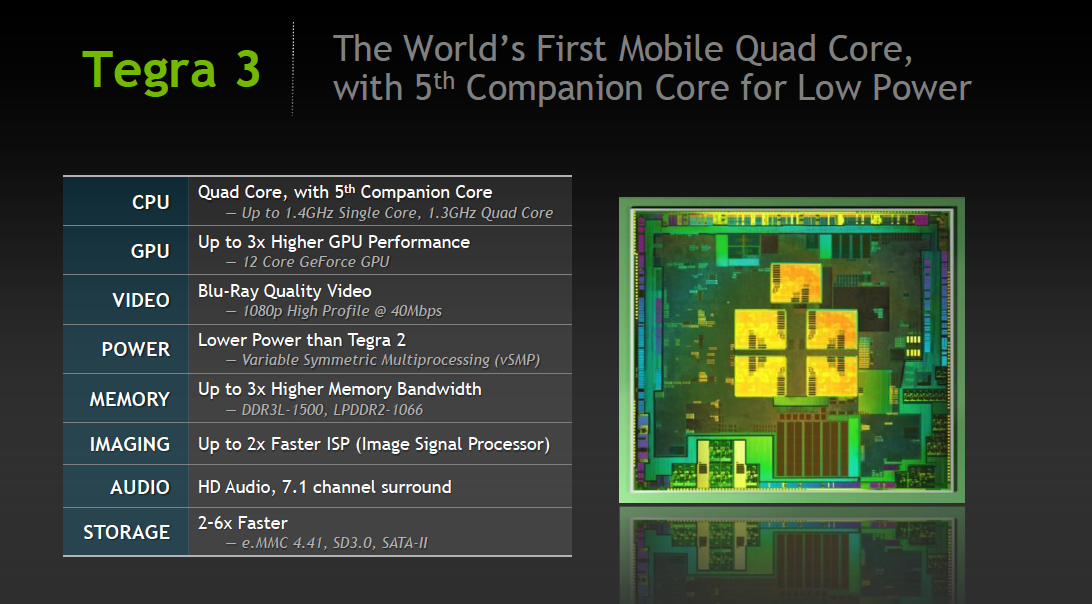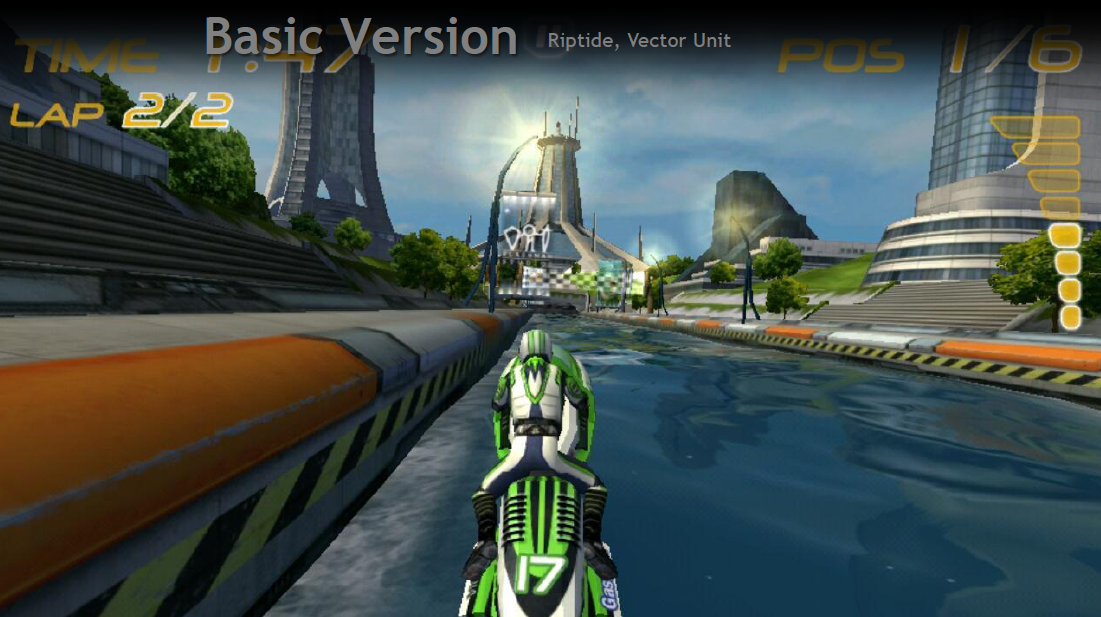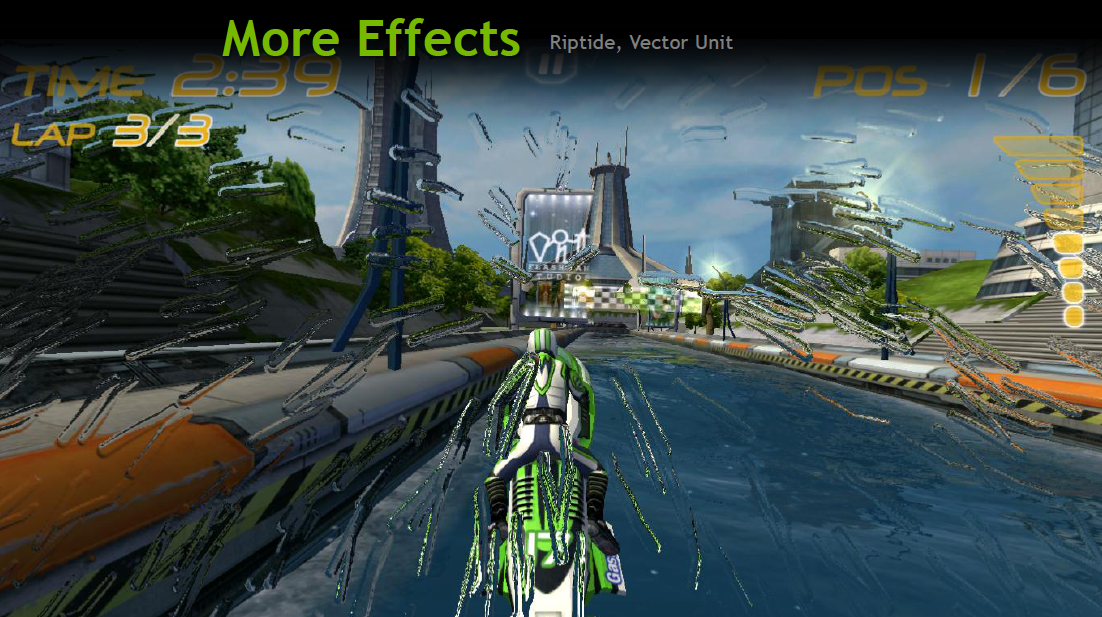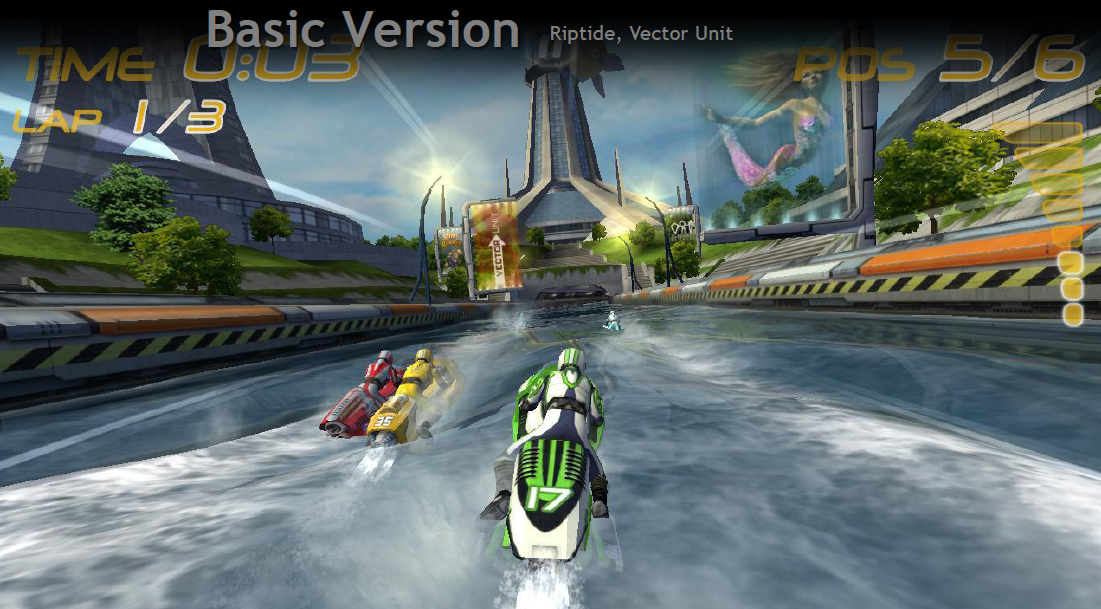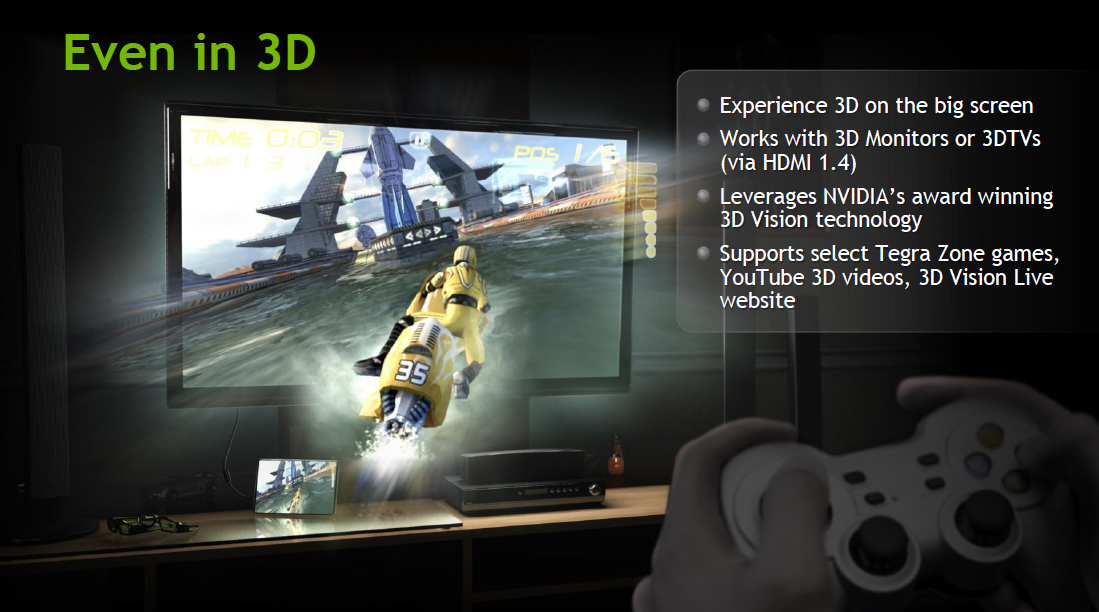Nvidia Tegra 3: A Whole New Level of Mobile Gaming
Today, Nvidia formally unveils Tegra 3 (codenamed "Kal-El"). Given the number of leaks within the past few months, though, most of the technical specifications regard this latest SoC doesn't really surprise us.
Two months back, Nvidia published two whitepapers that basically spelled out what Tegra 3 would all be about. At that time, the company was adamant to only refer to its quad-core SoC as Kal-El. But who were they kidding? We all knew it was Tegra 3.
Tegra 3 Highlights:
- 5x performance of Tegra 2
- Better battery life
- 3x faster GPU
What's interesting is that Nvidia is promising better performance and improved battery life (compared to the Tegra 2). That's a tall order in world of notebooks, but it's an even more difficult task more when you're dealing with embedded architecture. The voltage requirements are much tighter and we're dealing with power consumption a magnitude lower than the familiar x86 processors.
However, Kal-El is technically a quint-core SoC (Cortex-A9 architecture), because it features a fifth "companion" CPU core that handles low overhead tasks such as syncing email, playing a ringtone, and keeping applications alive in standby mode. We've already covered the technical CPU side of the discussion on how Nvidia accomplishes in an earlier post, so it's not entirely new to us. (For those curious, SoC cache size is 32/32 KB L1 per core and 1 MB L2 shared among the four cores. The companion core has access to the full 1 MB of L2 cache when the main cores are idle.)
The end result is that we should finally be able to watch Flash video at sites like Hulu without major stutter, which has always been one of our major complaints concerning Android devices. After all, what good is touting Flash compatibility over Apple's iOS devices when video playback is choppy?
On the GPU end, we should make it clear that Nvidia has basically recycled and supercharged its Ultra Low Power GeForce GPU from its Tegra 2 SoC. The graphics core is still restricted to OpenGL ES 2.0, so it's not a move up in the same way we'd think of DX10 to DX11. Furthermore, unlike Nvidia's desktop GPUs, both SoCs are based on an architecture that pre-dates the company's unified design.
Get Tom's Hardware's best news and in-depth reviews, straight to your inbox.
With Tegra 2, you’re looking at four pixel shader cores and four vertex shader cores. This means the SoC operates most efficiently when the ULP GeForce GPU is presented with an even mix of vertex and shader code. Tegra 3 basically doubles the number of pixel shaders, which means it's going to operate most efficiently when faced with an uneven mix of code.
While the graphics core hasn't undergone a revolutionary overhaul, you are going to see games optimized for Tegra 3 that enable dynamic lighting, motion blur, and more realistic water and ballistic effects. This is partly due to the fact that many games continue to be CPU bound; so, the quad-core architecture is really going to help.
However, the increased memory bandwidth also increases the capabilities of the GPU. How much is a matter of debate, but we expect that this will open up a whole new world of mobile gaming.
Nvidia is already advertising the fact that you can hook up a Tegra 3 tablet to a 3D monitor or HDTV and use a PS3, Xbox 360, or Wii controller to play games. That's currently possible with a current Honeycomb-based tablet (minus the 3D part), but it's a less than ideal situation because Tegra 2 lacks the horsepower to make gameplay completely smooth.
Tegra 3 promises to close that gap, which highlights the fact that we're coming to a point where there's greater convergence between devices. Nvidia's may have finally taken the first step in demonstrating that this isn't just a pipe dream, but it's a real possibility as the technology matures. A tablet that replaces your gaming console? That's something that looks mighty tempting.
-
IClassStriker Thats insane, i love the direction technology is moving towards. Only if the inventions came out faster than they do..Reply -
Onikage Thats right ! as soon as that Transformer 2 Asus Tablet comes out, you have a portable console right There !Reply -
lockhrt999 They should have mentioned what chipset they meant by competition.Reply
And competition isn't that slow. maali 400 in Galaxy SII can play original BD content (mt2s as well as mkv) effortlessly at 1080p.
@Andrew Ku: When can we expect benchmarks? -
saturnus So we're looking at a processor that does core2dou performance with entry level GPU in a sub-2W SoC. That could make a serious splash in the corporate thin client/ultramobile market once win8 comes along.Reply -
acku lockhrt999They should have mentioned what chipset they meant by competition.And competition isn't that slow. maali 400 in Galaxy SII can play original BD content (mt2s as well as mkv) effortlessly at 1080p.@Andrew Ku: When can we expect benchmarks?Reply
They say "competition" but these games are all TegraZone only games. Suffice it to say "competition" means Tegra 2. Nvidia just doesn't say so because it's not good to undercut the sales of their existing SoC, which will now be slated for entry level tablets. Tegra 3 will be positioned as a solution for "premium tablets."
I rather not post the "leaked" benchmarks because we haven't seen measured performance for ourselves. That said, we'll have something in the lab before you make your holiday buying decision.
Cheers,
Andrew Ku
TomsHardware.com -
darkstar845 They said "3x faster GPU"Reply
How come they can improve the performance so much on the mobile sector but can't even increase the performance of Desktop GPU by 50 percent on each new generation? -
alidan the jet ski game looked better without the added effects.Reply
wish they would show comparitive graphics tech demos, like a "look how bad tegra 2 handles this, now look at 3"
because tablets, at least to me, are only good for gameing, and the moment they become a viable console ill be all over one, but as of now, they are barely a gameing device in my eyes. -
_Pez_ I liked the part where they say use it as a console !! that is a GREAT tiny console. the Only thing I want to know is what games does actually run in there for tegra3?Reply -
mman74 This is impressive. I love how they are plotting a path to make android a portable console. This is exactly what the PSP Vita should be doing, allowing PS3 controller support with HDMI out.Reply
The one bad thing though is android games thus far have been woeful. It isn't processing power that is keeping it back though, it's the fact that so few developers are bothering with it. I don't mind paying 5 or 6 or even 10 bucks or more for a really decent game, but we aren't getting them because of Google's decision to allow non-marketplace application installation. If there are more Android users than iOS, then how come our games are dire and the vast majority of the ones that get high ratings on marketplace are the repetitive time-management ones that compel you to buy credits.
